A recent trip to the US-México border allowed our YAGM group to renew our visas and spend a week learning about immigration, U.S. border policy, and the many ways individuals, organizations, and churches mobilize to effect positive changes on the border. We were privileged to learn from those who advocate, pray, and walk to end death in the desert.  We went to the border. A wall, fence. Not in darkness of night or in the early mornings of dawn. We didn’t throw a ladder against the physical barrier and walk, run, or crawl when we had to. We walked in broad daylight. Paused at the wall and soaked in the striking desert landscape. This is the space where one land becomes two. A wall can control where migrants cross but not why. Encouraged by the need for cheap labor in the U.S. to grow our food and make our clothes, many make the journey North. Footprints move forward. Knowingly facing fear and risk, migrants pack their bags and their courage for the long and tiring journey ahead. Migrant belongings strewn across the desert: discarded water bottles, Red Bull, tuna cans and beans, and extra pair of socks or clothing. At another wall. The names of those who have died attempting to cross the Arizona desert are written on these tiny pieces of paper. Since 1998, the U.S. Border Patrol has counted over 4,000 migrants deaths near the border. The Human Rights Coalition estimates that this number is actually higher. Each year, 200+ migrants die due to dehydration, hyperthermia or hypothermia. In 2010 alone, “just four months into the fiscal year, the count of Arizona recovered remains is 61” (derechoshumanosaz.net). A weathered blue flag indicating a water station nearby. Written on this water tank: “Do not destroy this. You need them.” The U.S. and México have a longer history of being united as good neighbors than being separated by a wall. Now a physical barrier stretches over much of the 2,000 miles of the U.S.-México border. Urban crossing points are shut down, forcing most migrants to cross into the most isolated and desolate areas of the desert and mountains, even treacherous irrigation canals. With deaths rising every year, the border wall has failed as a deterrent; instead, it forces people to take a more dangerous entry route into the United States in search of a job. As long as our current immigration policy does not match the economic reality, countless migrants will continue to die in the desert that has already claimed more lives than the wars in Iraq and Afghanistan combined. Relevant LinksBelow are some links to the organizations and movements that seek solutions to the issues confronting the U.S.-México border:
0 Comments
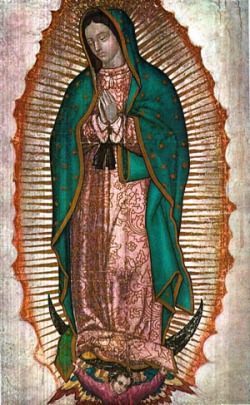 Fun. Relaxing. Cultural. My Christmas vacation was unlike any other - definitely an experience that will stay with me! Día de la Virgen The Virgin of Guadalupe has such an important place in Mexican culture and religious life, so her celebration on December 12th was a big deal here. In the days leading up to the celebration, some of the young men and women in the village went on a pilgrimage to visit the Virgin of Guadalupe’s shrine in the Basílica de Nuestra Señora de Guadalupe. According to Wikipedia: “over six million people attended the anniversary weekend commemorations in December 2009.” The pilgrims then ran all the way back from Mexico City along the highway, arriving in town late Friday night. I took these pictures during the long and dramatic procession on Saturday morning where it seemed like almost everyone had some role - carrying flowers, candles, or banners, etc. Interestingly, the music that accompanied them was Aztec (pre-Hispanic) drums and horns. Navidad Sarah and I were invited to celebrate Christmas with Ismael and Lupe’s family in a town called Temixco. Ismael drives us to the village each week, always amusing us with his stories and explaining some of the realities of Mexico with a good sense of humor, critical insight and enthusiasm. Lupe works on the same street as Sarah and I so we were really excited to get to know her and the rest of the family better. On the morning of the 24th we hopped on a “ruta” (bus) and spent most of the day helping out in the kitchen. Then by 8pm we went over to Lupe’s parent’s house for a marathon session of the game “Cien Mexicanos Dijeron” which is sort of like the Mexican version of Family Feud. Even though we gave it a good shot, I can safely say that my team did not win. Then at midnight, Lupe’s mom set out scarves, ceramic angels and Jesus figures, which Sarah and I had to gently sway back and forth as live sparklers crackled above our heads. Once everyone had kissed the “newborn” Jesus and after we set him in the Nativity scene, then it was finally time to eat! The night lasted into the early morning hours as we devoured vast amounts of food, drank coffee to stay awake and nibbled on treats from the piñata. On Christmas Day we all came back for leftovers and more games! Charades, as I discovered, is more up my alley!  Pie de la Cuesta Some of the other volunteers and I took off for a highly anticipated trip to the beach! We stayed in Pie de la Cuesta, a sleepy beach town with the Pacific coast on one side and a lake on the other. The water was too rough for swimming but the breeze was salty and cool and it was sunny each day. All in all, it was the perfect place to just relax. My favorite moments were watching these incredible sunsets:  We also visited a place called La Quebrada in Acapulco to watch the famed cliff divers.  Here is where high-divers jump off the cliffs into the water below. Año Nuevo en el “Pueblo Mágico” Another quick trip was to Taxco, a mining town in Guerrero that still has a colonial feel to it. Cobblestone streets and red tile roofs spread across the mountainside make it such an enchanting place. No wonder Taxco is also called "El Pueblo Mágico,” meaning a magical town. Again, we were invited to spend New Year’s Eve with a coworker’s family where we indulged in a delicious feast of chicken tacos and vegetables. We learned how to dance “guerrengense,” or Guerrero-style, and I even had my turn at the piñata - although I barely made a dent in it since it was being hoisted up and down the whole time. The piñata, however, managed to hit me on the head. Go figure. I suppose that bonk in the head is fitting by now since I feel like the “honeymoon phase” is over. The day-to-day feels less and less like a giant, wild, and surprising adventure; instead, I experience more and more comfort and familiarity in my surroundings. Being invited to all of these important religious and cultural patterns was a good buffer between closing one chapter and beginning another. That said, I do miss the acute sense of new discoveries but there's so much to be said about the meaning and purpose in adapting to a routine.
Moving into this new phase, I'm reminded of a Dag Hammarskjold quote that I came across in a book by Rebecca Schlatter (The Treasure Hunt of Your Life, 2009). It goes: "For all that has been—thanks! For all that shall be—yes!" So with gratitude and anticipation, here's hoping that this new year - and the new changes that it brings - finds you you with deep joy and peace. Cheers!  As La Navidad is here, I'd like to share a glimpse into the hidden moments of holiness that I've encountered along this incredible, challenging, and spectacular experience in Mexico. These are the hands that have held me along the way... "Her Hands" Hers are the hands that embrace, encourage, and empower: Domitilia and I meet in the market and share the weight of a bulky bag until we reach her house. At the doorway, Domitilia offers me a ripe, yellow banana. Take it, she says. Hers are the hands that create radical wholeness: Agustina sits outside with her hands in her lap. Glancing down at her malformed knuckles and fingers due to arthritis, she asks almost emphatically, And my hands? How can I make my tortillas? Later Agustina groans in pain and prayer, Virgin of Guadalupe, Lupita Mamacita, she cares for me. And God cares for me. Christ, he accompanies me. Hers are the hands that reveal and bring forth awareness: Esperanza’s grip squeezes my three fingers. Both hands meet as we enter into her dimly lit home. By the faint light that pierces through the roof, I notice that her frail hands and thin fingertips are stained by palm dye. Mine are stained, too – except by food coloring from a birthday party earlier in the day. Inside, I'm horrified. Our differences mark us in such a real way. Hers are the hands that weave together imagination and hopeful promise: Lucia’s fingers interlace and cross pieces of palm - requiring skill, creativity, and persistence. By the end of the hour I manage to finish my small canasta. I’m so in awe of the more complex and colorful basket that she’s also completed in that time. A piece of imagination is delicately woven into a day's work. 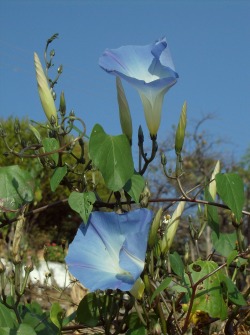 In beauty parallel to the vulnerability of the incarnation-mystery:
Hers are the hands that receive in faith God's promise of embodied Love; pointing to the presence and activity of God's being. Clapping and rejoicing in God-with-us: Hers are the hands that welcome the life and light of Christ into the world. Hope has two beautiful daughters. Their names are Anger and Courage; Anger at the way things are, and Courage to see that they do not remain the way they are. St. Augustine of Hippo 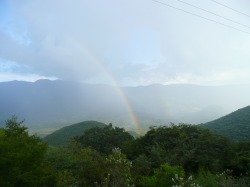 Click here to read the latest issue of Café.
This month’s author Erik Christensen offers a beautifully written reflection on Mary’s song, prompting us to “find a sense of hope for the future rooted in something deeper than simple optimism.” May the God of hope be present with you this season, nudging your heart towards “Hope’s two beautiful daughters” and filling your Advent song with passionate expectation. So what’s been going on lately? A lot. FIRST, Sarah and I moved into a new apartment just up the street from where we were living before. It’s a cheerful, colorful place that lets in a lot of light and overlooks a steep barranca, or ravine. The view at night is breathtaking! With two gorgeous poinsettia flowers to start, we now face the task of decorating and making it “home.” LAST MONTH I accompanied a woman and her daughter to Mexico City for a medical visit. This was definitely a day full of new things to learn - where the process was energizing and exhausting all at once. Some very kind strangers assisted us in navigating lines and waiting rooms, X-rays, and brief meetings with nurses and social workers. Being inexperienced at all this activity, there were a few high-anxiety moments where the kindness of these strangers reminded me to pause and not go about things alone, but instead rely on the goodness of the countless beings who care. OUR FALL RETREAT was held November 16-20. We learned about globalization and food security and reflected on how these issues affect the people with whom we live and work. Not surprisingly, in Mexico the presence of multinational corporations and free trade agreements, such as NAFTA (North American Free Trade Agreement), are extremely visible. Being placed in a rural setting, this is a reality I can’t ignore. Many families frequently leave the community to sell their palm baskets in nearby towns or even further away at tourist hot-spots like the beaches in Acapulco or Puerto Vallarta. 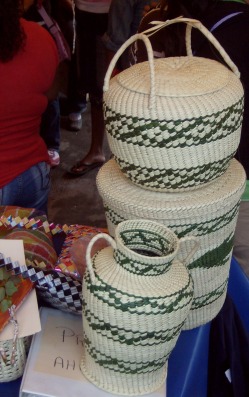 I was struck by a few situations that are specific to my placement site: When a mother can’t afford to feed her children a nutritious meal because food prices have risen drastically, or when a campesino’s land was paved over so that the Coca-Cola, Pepsi and beer trucks can have a smooth drive into a town (as they do daily - with an armed guard!), or when fathers who were once chronically absent return home after yet another factory has closed - it’s no surprise then that many feel that their dignity and freedom has been robbed of them, pushing them even more into a cycle of despair and hopelessness. Little by little, I’m learning from those who know first-hand the consequences of this kind of accelerated globalization, who tell me that something has to change and that, yes, in that struggle for transformation they want to have their voices heard. ON OUR FINAL DAY of the retreat we visited an organic, sustainable farm. There we saw flourishing lime and papaya trees, sheep and pigs, and learned about sustainable home construction like dry toilets and green roofs. It was a nice way to unpack the heavy topics we discussed and also reinvigorated me with a sense of trust that things will be right in the world; although it takes some persistence along with a healthy dose of self-reflection on how we as persons (and communities) act in the world. Then it was play-time at the balnearios where we spent most of the afternoon swimming, laying in the warm sun, and jumping off a platform into the water. It was a lot of fun and probably the highlight of my week!
BACK TO WORK in Guerrero, in which every day is a challenge and a joy. Lately I’ve found it hard not to be distracted by the intensity of my work and all the little things that add up, so I’m trying to find more time for quiet as a way to process all that I experience. The needs are really pressing and at the end of the day I’ve found some good space in the company of my friend, Sarah, and among our team in the office. I’m so nurtured by the holistic environment that we work in, openly sharing the healing power of love and positive thoughts and, even on the good or not-so-good days, discussing how we have felt, seen or did not see God. LOOKING AHEAD to when I can hopefully squeeze in some travel and catch up on some much needed rest during Christmas vacation. We’ll be staying with some Mexican friends during their family’s celebrations on Christmas Eve and Christmas Day. I know I’ll miss being home with my family but at the same time I am soooo looking forward to being part of how another family and another culture celebrates Christmas. This is another one of those wonderful moments when people have gone out of their way to make us feel welcome to their meaningful family times. This form of hospitality constantly amazes me. A word that comes to mind is convivencia, or life together, and for me that’s the best way to describe it. I’m so grateful to be surrounded by people who willingly share who they are and I know that this year would not be the same without their presence. In the end, it stirs in me the sense that I too may not be the same because of the relationships I have formed with Mexicans. Far from the spooky orange and black decorations that mark the Halloween “season” back at home, here in Mexico Dia de los muertos (Day of the Dead) is celebrated with bright purple, pink, orange, and red colors. 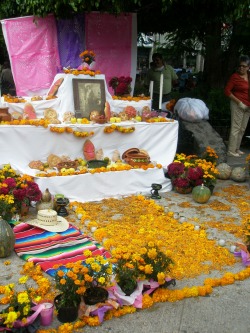 Between October 31 and November 2 – and in the weeks leading up to Dia de los muertos - the street corners are bursting with flowers and the sweet aroma of pan de muerto (a soft bread) wafts out of storefront bakeries. Meanwhile, in cemeteries, families wash their loved ones’ graves and lay fresh flowers as well as the favorite foods and beverages of the deceased. A group of us had the chance to experience more of this on Sunday both in Cuernavaca and also in a small town called Ocotepec. First, a public garden showcased lots of creatively decorated Catrinas (skeleton figures) and an elaborate ofrenda (offering, or altar) was on display in the Zocalo, much like the ofrendas that are made to the deceased by family members in their homes. Later that night in Ocotepec we began by following trails of marigold petals along narrow cobblestone streets until we spotted a line forming outside of a home. Those who have lost a loved one in the past year open their homes to family, friends, neighbors, and complete strangers. Everyone is invited. It’s said that on Dia de muertos that the dead return home to commune with the living by feasting on the food and drink that is put out on the ofrenda. In some cases, the whole room becomes an ofrenda! At each house we passed under a canopy of flowers that spelled out the words: “Welcome home” – a greeting for the dead and not just the living – and each visitor gives the host a candle in exchange for a piece of bread, coffee, a tamal, or ponche (a warm fruit drink). All this is a joyful time for remembering the deceased person and enjoying the company of many guests. It was a unique experience to come to know not only how special each person was to her or his family but also to see an elaborate display (which probably took days to construct) of their clothes, pictures, and all the other things they enjoyed when they were living. At first glance, the skulls and candles might trigger images of death, or it could be that the festive colors and expressive, humorous skeletons make it seem like Halloween-light. My thoughts went back and forth between those two reactions. But now I see that Dia de los muertos is much more. Instead it’s a unique ritual and celebration of life – and in a way it almost mocks death. For Mexicans, this week a special time of mourning and celebration, physical and spiritual, life and death - symbolized in the flowers, sugar skulls, fruit, incense and candles that are placed on families’ ofrendas (offerings). It’s a reminder to honor and embrace duality, rather than fear it. What better way to celebrate life?
* Thanks, Katherine, for the pictures! Living at the Center and working with children and adults with special needs means that I visit a lot of people each day. Both at the Center and during those home-visits there are often things that people say that stick in my mind.
So here are some of the phrases that I love to hear! · ¿Leemos libros? “We’re reading books?” the enthusiastic boy yells as he is racing up the path toward the Center (more than two hours before the morning education program begins). He knows that inside a giant box are many, many children’s books – a special treat since there are few books to read at home. · ¿Me acompañes? “Will you come along with me?” says a community midwife who is on her way to visit a newborn baby and her mother. I take notes as she weighs the baby, takes her footprint, and bathes the newborn, washing her gentle skin with care. · Si puedo, “Yes I can,” softly mumbles a three year old child who born with a cleft lip, he recently discovered how to inflate a balloon all on his own! His four siblings giggle with delight as the colorful balloon swells in size. When their brother releases it from his tiny fingers, the “globo” suddenly deflates, twirling in the air and making a silly noise as it drops to the ground. · Pienso en mucho… “I think about a lot of things…” a middle-aged woman thoughtfully mentions when I ask about she’s been up to these days. We know that rheumatoid arthritis at age 51 isn’t fair but it’s not the end. Physical limitations aside, she lives out what it means to have a stronger, healthier life by dreaming, imagining, and gradually realizing the possibilities ahead. Words and phrases like these are so powerful. Through the telling of people’s stories, I’ve been allowed to enter a bit more into their lives – and I too am sharing more of my story with others. This has been a good step in building relationships. And there are also special moments when there are no words. Lately the times when I feel spoken to the most are when I’m working with a teenager who is deaf. Often this young woman will stop whatever she is doing and glance down, noticing the warmth of the sunlight as it reflects off of her chair and touches her elbow. It took me a few times to realize that she isn’t distracted from her work but instead she’s appreciating the sensory things that I would otherwise miss! During our visits together, she teaches me to recognize and take pleasure in these things such as sunlight, a light breeze, warmth, textures, bright colors, and more. What used to seem ordinary is transformed into an exciting and beautiful moment to behold. It’s an honor to walk together with people who dare to dream big! In this process I’m also learning to be more aware of my own dreams and abilities; especially how to Be, fully in the moment; Feel, deeply, as in the marrow of my bones; Connect with what is in my heart; and finally Listen to the gentle rustling breeze of where, when, and how the Spirit is most present. Words, spoken or not, are the most unexpected gifts where life seems all the more real and the way it’s supposed to be. I wonder, Isn’t this what we call grace? Winding, winding, winding Up, up, up Down, down, down. “Donde vas Katie?” Is what I hear when I pass by a dear one along the street, I point up toward the top of the steep hill where more women are sweeping, Paving the road in front of their homes for beauty. Graffiti-stained concrete and beauty, There are lies sprayed across a corner wall, And gently laid flowers An eary symbol that Truth exists. Truth remains Not hidden entirely, Only enough to miss seeing it. Aware, inspired, empowered By the rarity that exists within the cycle Resisting briefly Reality, like my gut then, is turned on its own. Freshly swept Green leaves dotted with deep yellow marigolds Bright magenta colored bougainvilleas Wrap the narrow pathway Paving the roads for this kind of beauty,
That goes… Winding, winding, winding Up, up, up Down, down, down. (Note: When I use " town", "community", or "village" I'm referring to my placement site - and many thanks to Sarah who took a lot of these pictures!) It’s rainy season in South-Central Mexico. Here in Cuernavaca big clouds stretch across the sky and bring refreshing, chilly winds, light sprinkles and sometimes lightening and booming thunder when heavy rains enter into this urban basin. In the community where I work each Wednesday through Saturday (waaaay up in the mountains, about two hours outside of Cuernavaca), it seems like it rains even harder. At the Center there’s an abrupt whipping noise as rain pounds on the tent above our table, and a cracking wind that tosses around plants and tall tree branches. As the rains rush down sloping hills, crops along the mountainside are nourished; dirt and debris wash from the top of steep, narrowly paved roads. A rural nighttime bath. This also seems to be the time of year for fiestas. September 8 was the Nativity of the Virgin Mary, an important day of observance and celebration for many Catholics. Nearby the Center, pre-recorded church bells rang early each morning around 6am - give or take half an hour - and minutes later a band would perform the most, well, interesting arrangements. Trumpets, saxophones, drums, and cymbals clashing together preceded a day full of activity. Those of us of us at the Center would joke that the only way to get through the constant noise was to focus on only one instrument at a time, since each person in the band seemed to be playing their own creative tune. Then all day music blasted from radios and cars, accompanying many processions, some religious and some not, throughout the town. Marigold flowers, incense, statues of La Virgen de Guadalupe and other saints were carried up and down the roads by crowds of men, women, and children. Sometimes this was a solemn procession and at other times I saw men dancing at the front with Mexican folk art figures and colored masks. Fire-crackers would burst overhead from time to time and, without fail, each shot startled me! Many streets in Cuernavaca are still bright with the colors of the Mexican flag: green, red, and white. On Tuesday September 15 we celebrated el dia de independencia, the Day of Independence. That night all five of us YAGM volunteers met downtown at the zocalo, or city square, surrounded by lots of people celebrating, eating food, dancing to live music, etc. There was also a giant clock counting down the days, hours, and minutes to Mexico 200th anniversary of independence - next year, 2010. Even though streets were blocked off from regular traffic, they were nonetheless congested with vendors selling traditional Mexican dishes like steamed corn, quesadillas, warm atole (a corn-based drink), pozole (a soup made of chicken, hominy corn, and spices), and more. (Check the website later for some recipes!) A mariachi band played close to the hour when everyone gathered together to join in on the Grito de independencia, the shout for independence, at 11pm. Under pouring rain (big surprise?) the crowd shouted “Viva!” as the names of heroes, both men and women, were commemorated in the fight for Mexico’s independence from Spain. Finally, from the balcony of the Palacio Municipial, the municipal president declared Mexico’s independence from Spain and the words “Viva Mexico!” echoed all around. White silly string flew into the air, showering the crowd where kids, sitting on top of their parents shoulders, blew whistles and noisemakers, and a collective yell filled the city square as the bell rung, signaling that Mexico has declared itself a free and independent nation. After this ceremony the Mexican national anthem played and then under a haze of patriotic fervor and euphoria, an exciting burst of fireworks lit up the sky. The celebrations aren’t over yet! We’re still in the month of fiestas patrias, so this past week outside of Cuernavaca was also full of excitement and energy. On Wednesday morning as we drove to the Center, there were lots of parades along the roads where school children, who had the day off, marched along with la Reina, the queen, of the parade. Since school in the afternoon was cancelled, Sarah and I watched some of the town’s celebration. We saw bailes which are traditional dances, a folk singer, as well as presentations and short poems read aloud by students and their teachers. I was so excited to hear a poem read in Nahuatl! A few feet away there was a game for the men where they had to climb up a greased pole in order to bring down shirts, jeans, and other clothing that were tied at the top. The man pictured below is the only one who made it! It was an interesting contrast that the crowd seemed so much more reserved than in Cuernavaca. There was hardly any applause after each performance and I noticed that all the entertainment was brought in from another town. Performers, wearing the same colors as the Mexican flag, stood out against the women who use dark indigo blue or russet shawls. This strange mix of civic pride and traditional culture in Mexico really grabs my attention. It’s like there are two different Mexicos. I think the contrast is made even more visible in the community outside of Cuernavaca where I still can’t figure out how patriotism fits into the community’s identity. I wonder if people in marginalized communities, like the one I’m placed with, really feel free and democratic since their context is a product of failed policies, empty promises, and disempowerment. I won’t be able to understand this in only a year but it’s interesting to think about. The exposure to the bustling, full of go life in Cuernavaca against the more isolated and rhythmic pace of life where I work is fascinating. A challenge has been dealing with my own hopes for a better future and instead seek to understand others’ hopes and dreams. This has definitely opened possibilities for people to explain why or how “things” work, to describe reality based on their own experience, and in the process deepen all I can learn from others’ perspectives. I’m also trying to ask better questions and learn more about the issues people face and my role in them which, again, isn’t possible in a year.
It feels like time is flying and I’m not even a month in - but even in this short amount of time, the power and beauty of people’s stories has been the most precious gift, adding to an even more enriching, eye-opening and life-giving experience. I’m so glad to be able to share parts of my story with you who support and encourage me. I’m thinking of you often, with gratitude, joy, and peace. I had an unsuccessful attempt at a nap today and ended flipping through the index of my trusty Cuernavaca map, which, believe it or not, actually became really interesting once I came across some of the more hard-to-pronounce street names.
Here are the top 5: - Ixcateopan - Miahuaxochitl - Netzahualcoyotl - Popocateptl - Tepeyehualco And I thought I’d add this one on the list, too (it’s my personal favorite): Xoxocotepola Phew! Nope, those are definitely not Spanish words or names. This is Nahuatl, an indigenous Mesoamerican language that is still spoken in some parts of central Mexico today. Nahuatl is spoken by some of the older people in the community where I'm placed this year. Sarah (another YAGM volunteer who I’m working with this year) and I had the opportunity to visit this community on Saturday. We had a mini-orientation into the kind of work that the organization is involved in and it was a chance to get a feel for what life is like in this Nahua community – especially when we were invited to observe and participate in some of the indigenous traditions such as basket weaving (which looks easy but it’s not!) and making corn tortillas (I need some practice). I was really struck by the complexity of this community because for so long it has been able to retain its traditions, language, and culture but it’s now undergoing so much outsider influence. We walked by lots of stores with the Coca-cola brand logo brightly painted in front and a Pepsi truck drove through the town (like it does each and every day), passing by women wearing shawls as they have for generations. From weaving baskets made out of palm, hearing about this indigenous tradition as well as its importance for the economic survival of the community, to making room for perfectly flat, round tortillas by scraping away at my own that were too small, too lumpy, and broken apart on the open-fire grill, and searching for deeper answers to the questions that swim around in my mind after our first visit, I left wishing that I had a fuller sense of how all these activities play out in the pattern of daily life. Patience and trust, I keep telling myself. The fresh, familiar feelings of what is unknown, like the street names, or the amateurish basket and crumbly tortillas that I made, even though they may be superficial examples, are part of a host of situations where doors are opening to new experiences -- doors to new possibilities and understanding. These are just some of the things that are becoming part of a more full, abundant experience as time goes on. So instead of ignorance and fear of what seems different, strange, or mistaken, I'm learning to be patient with (and trust!) the process where the hope, wonder, and surprise of the moment continues to amaze me so far. Below is a picture of the basket I made. The one with gaps, holes, and pieces of palm sticking out in odd places is mine. And behind it is a “real” one. You can tell it’s woven much tighter, neater, and it’s more detailed; definitely made from more experienced hands! |
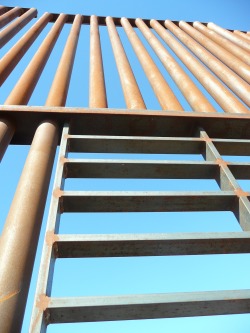
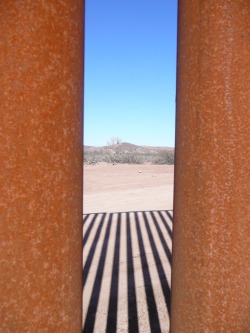
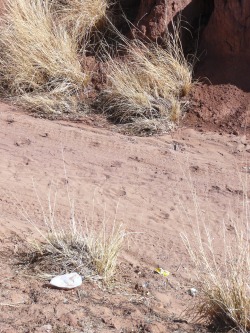
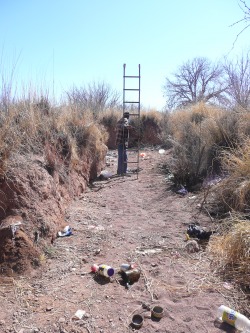
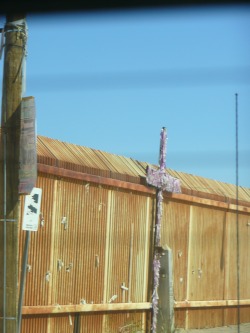

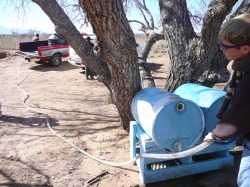
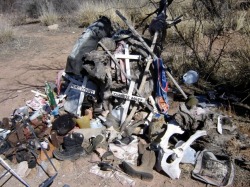
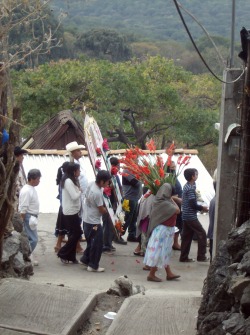
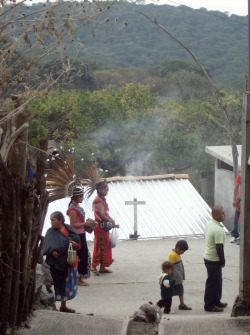
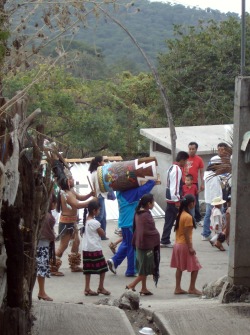
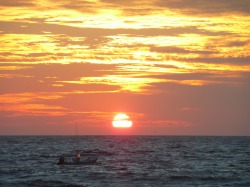

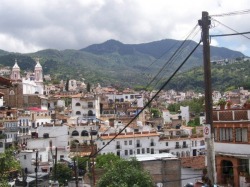

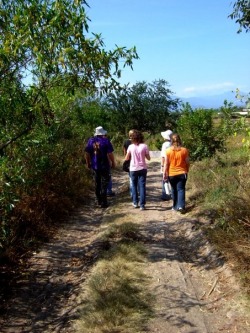
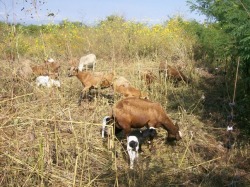
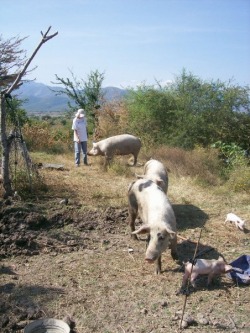
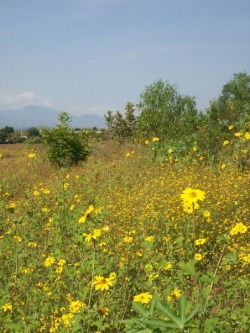
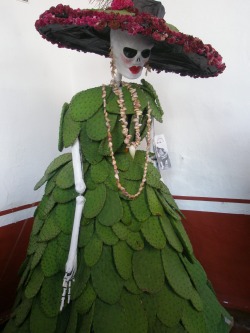
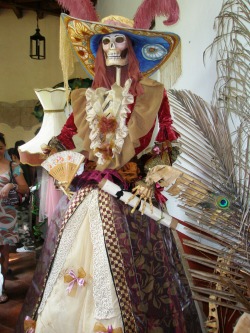
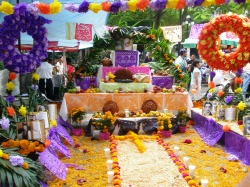
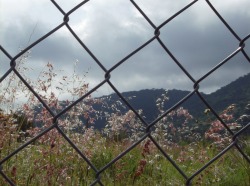
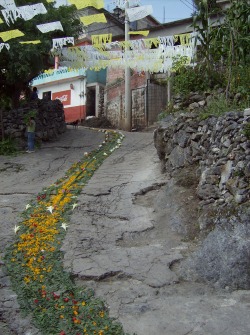


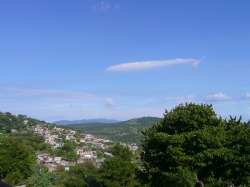
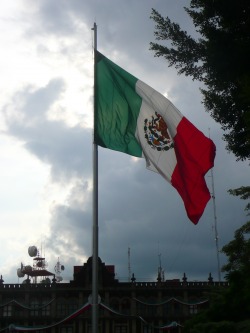
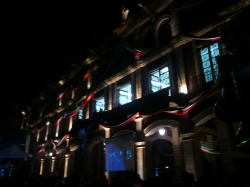

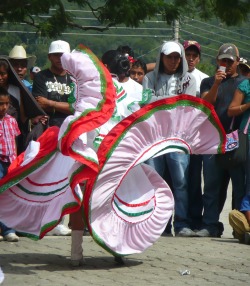

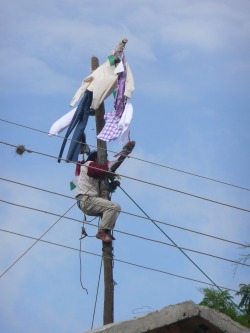
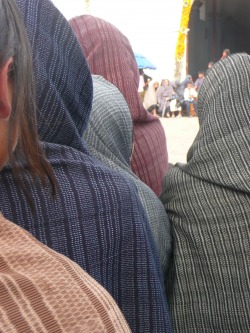

 RSS Feed
RSS Feed